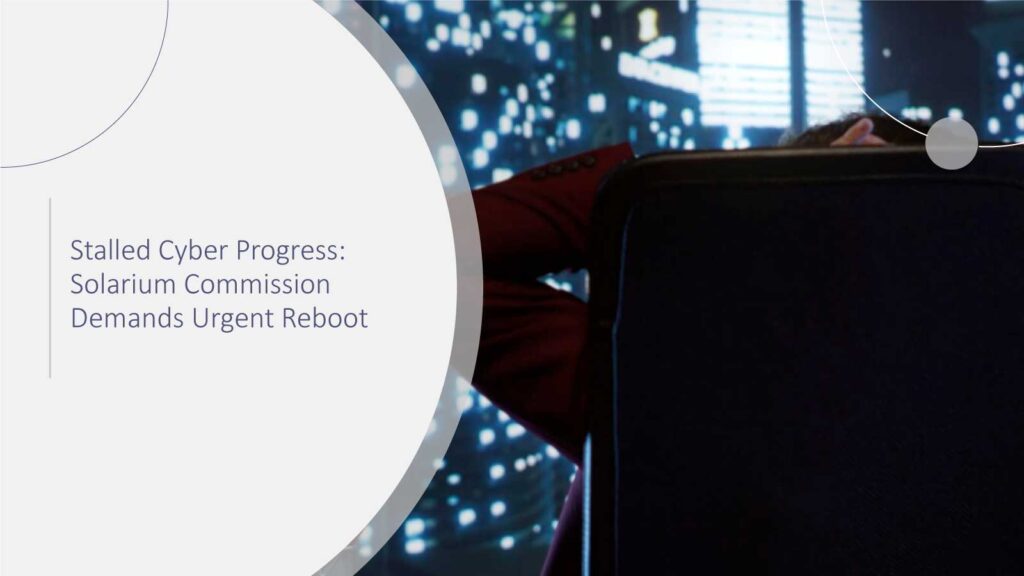Imagine just a moment that you receive a call from a person who says that he is from the IT help desk of your company. Immediately, he proceeds to tell you that they are one of the tidiest and most well-behaved teams, and they even ‘incidentally’ mention the last internal system update. They let you know that your account will be the next victim, and due to that, they require your login details immediately to “secure” it. You reject the offer, but the caller says that the only protection is at hand. So, out of care and concern, you give them the information. Later on, these intruders will access your company’s network. It is social engineering – the same as that by which hackers do not go with codes, but fool human trust to get into the system.
Firewalls and AI detection systems do their job effectively, and still, the majority of human negligence that stems from psychological manipulation is the main cause of cyberattacks. Gartner also predicts that by 2027, 75% of security failures will be due to human error rather than technology flaws, reinforcing why social engineering remains the easiest door for attackers.
First, we need to understand what social engineering is and the reasons for its great success before learning how we and our work can protect ourselves from the next statistic.
What Is Social Engineering?
Social engineering is essentially the process of convincing people to reveal sensitive information, do things that may harm them or the organization, or give access to places that are unauthorized. Social engineering, as opposed to malware or brute-force attacks, uses human nature and trust as its weapon.
Most of the time, attackers rely on methods that are normal, harmless, or even helpful to fool the victims. The most common ways of the attacks might be:
Phishing: A completely false email or message that tricks the receiver into clicking a harmful link or giving away personal information.
Spear Phishing: A phishing method focused on a single individual or company, which is very selective.
Pretexting: For instance, technology support or HR playing the role to draw the user out to expose sensitive data.
Baiting: Just to give a few examples of how hijack victims are virus-infected USB drives or “free” file downloads.
Tailgating (Piggybacking): When an authorized person with no proper credentials is closely followed into the restricted area.
Vishing & Smishing: The former is voice phishing over the phone, and the latter is text-based phishing via SMS.
And what is the law of the situation? The success of the perpetrator will be only as much as they do everything equally as convincingly as they usually do. Trojan horses may also be a calendar invite, a voicemail, or a free software download.
Why Social Engineering Works: The Psychology Behind the Attack
The question you might ask is: Why do intelligent people, including cybersecurity experts, still fall for social engineering? The answer is straightforward: because the perpetrators do not break into the systems first, they break into human minds.
These are the reasons why these methods work:
Authority Bias – Individuals are more likely to agree with a request coming from a figure of authority, as is the case with a CEO or government member
Urgency & Fear – A message stating “your account will be suspended in 24 hours” elicits a response without thinking.
Curiosity & Reward – Is there anybody who has not felt like clicking on “exclusive offers” or “confidential reports”?
Politeness & Trust – The human brain is designed to accept social hints and to avoid confrontations.
If we look at it like this: the technology for cybersecurity may alter each year, but human logic has not changed very much from the caveman times. The attackers know this, and they take advantage of it. McKinsey’s 2023 report on digital trust found that 67% of executives see ‘employee awareness gaps’ as the single largest vulnerability in their security stack.
Real-World Examples of Social Engineering
To measure the magnitude, we shall consider the cases of social engineering that caused the biggest breaches:
Twitter Bitcoin Scam (2020): Hackers misled employees and made them give the internal credentials. It was a hijacking of accounts that led to the promotion of a Bitcoin scam through Twitter posts made by celebrities like Barack Obama, Bill Gates, and Elon Musk.
Target Breach (2013): The thieves used the stolen login details of a vendor who supplied heating and air-conditioning to the company to illegally enter the system and thus were able to steal more than 40 million credit card records.
“CEO Fraud” (Business Email Compromise): IBM’s 2024 Cost of a Data Breach report highlights that phishing and social engineering are the costliest initial attack vectors, averaging $4.76 million per breach.
See the similarities? These are not ordinary Hollywood-style hacks. They are exploiting trust.
The Evolution of Social Engineering: Enter AI
Emails from phishers that conform to the traditional methods of social engineering in AI were full of spelling mistakes and bad grammar. Nowadays, cybercriminals use AI to create emails that don’t have any mistakes and that are very believable; they also use AI to imitate people’s voices. Just think of the ways deepfake technology is helping: not only to copy the CEO’s voice but also to make the video call look genuine. Deloitte research in 2024 showed that 84% of security leaders are concerned about AI-powered impersonation attacks like deepfakes becoming mainstream in phishing campaigns.
Actually, in the year 2024, among all types of fraud, the FBI increasingly whispered that AI impersonation accidents led the ludicrous fellows to mimic the voices of the corporate heads to fool the workers into transferring money. With this, AI has become a double-edged sword that not only defends the good guys but also equips the bad ones with a new arsenal.
Recommended: How Generative AI Is Fueling New Waves of Social Engineering
Defending Against Social Engineering
The good news that makes us feel powerful is that though humans are the attackers’ targets, they can simultaneously be the attackers’ weakest link; the right preparation will make this possible.
1. Cybersecurity Awareness Training
The number one protective measure is continuous training. Phishing emails, suspicious requests, and fake websites should be part of the employees’ learning about identification and exposure to these threats. Companies that have solid educational programs reduced the rate of successful phishing attacks by up to 70%. PwC’s Global Digital Trust Insights survey found that organizations with ongoing employee awareness training were 50% less likely to suffer a major breach.
2. Adopt a Zero-Trust Model
The point is that you should assume a malicious intention for every request, even the ones that come from your internal staff. The new motto is check first, then trust.
3. Multi-Factor Authentication (MFA)
MFA is like a spare net. If the credentials of a user have been stolen, the intruders will still not be able to get access unless the second authentication factor is in their possession.
4. Simulated Attacks
One way for organizations to test and upgrade the vigilance of their employees is they conduct mock phishing campaigns. Performance in simulations is better than in real attacks: failure in a simulation is much more acceptable than failure in a real attack.
5. Encourage Reporting Without Blame
Employees must be allowed to report occurrences of suspicion if they feel safe about it. The attackers are the ones very much like beneficiaries of a silent culture.
6. Leverage AI for Defense
AI-driven tools are capable of spotting irregularities in a given conversation, locating deepfakes, and detecting suspicious behaviors much quicker than humans can.
A Human-Centric Defense Strategy
Cybersecurity is not just the layers of protection or the codes. The whole concept revolves around the creation of an environment where people are completely in charge of their actions while they inquire, verify, and act carefully.
Without difficulty, imagine the case in which you are driving a car. With the side airbags and seat belts, which are a safety feature, the ultimate safety, however, still lies in the driver’s hands. Employees are the drivers in this case. They become the strongest shield rather than the weakest link once they are managed and supplied likewise.
The Road Ahead: Getting Ready for Future Threats
Social engineering will always be alongside technology, and this relationship will continue to grow in the future:
- The AI-powered phishing that will be malicious and hard to find is one of the future technologies.
- The fake video scam may cause another reason to mistrust virtual meeting trust.
- The perversion of the IoT might drag the exploitation from emails to smart devices and connected infrastructure.
The World Economic Forum’s 2024 Global Cybersecurity Outlook ranks social engineering as one of the top three threats expected to surge over the next five years, especially with AI making scams indistinguishable from reality.
Nevertheless, security through the creation of awareness, vigilance, and a strong security culture will be the abiding qualities. Even though technology has the capacity to expose and block attacks, human awareness remains the last barrier that the perpetrators have to struggle against.
Conclusion: The Takeaway You Can’t Forget
Social engineering is indeed one of the hardest tasks, which makes the human mind not only the battlefield but also the domain.
Not always is the attacker’s tool malware. Most of the time, it is persuasion, urgency, or trust.
The point is well explained: the best countermeasure of social engineering is keeping smart and alert people who are supported by a carefully designed security system. It will be even better if the recipients of a suspicious email, call, or “friendly” request try to scrutinize it rather than just accepting it at face value.
Because in the end, the cybercriminals who choose to target humans rather than machines do not need to hack machines.
FAQs
1. What is social engineering really about?
Basically, social engineering is the process of deceiving people, not computers, in order to obtain sensitive information.
2. What tricks do attackers use most?
The attackers might use phishing emails, fake calls, offering free downloads, or even entering the target’s office without being noticed.
3. How does one stay safe?
Take a moment to think, confirm the information, and never give out your personal details hastily. Also, the use of MFA is helpful.
4. Is it just about emails?
Absolutely not, phone calls, SMS, USB devices, and even deepfake videos are considered as well.
5. What’s the first step for companies?
Employee training and making it easy to report any suspicious activity, without feeling at fault, are the first steps.
For deeper insights on agentic AI governance, identity controls, and real‑world breach data, visit Cyber Tech Insights.
To participate in upcoming interviews, please reach out to our CyberTech Media Room at sudipto@intentamplify.com.






